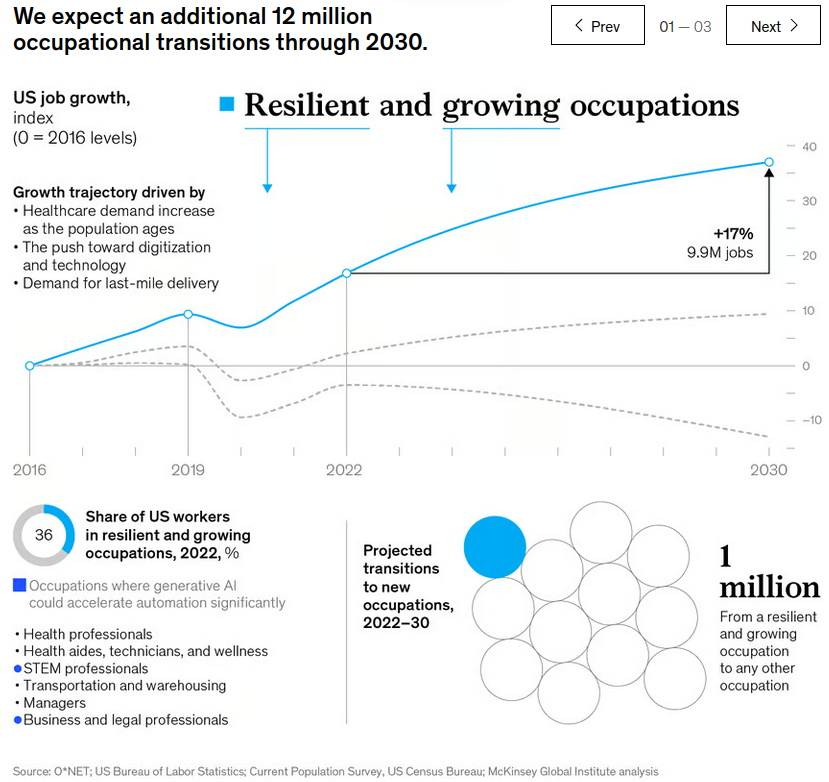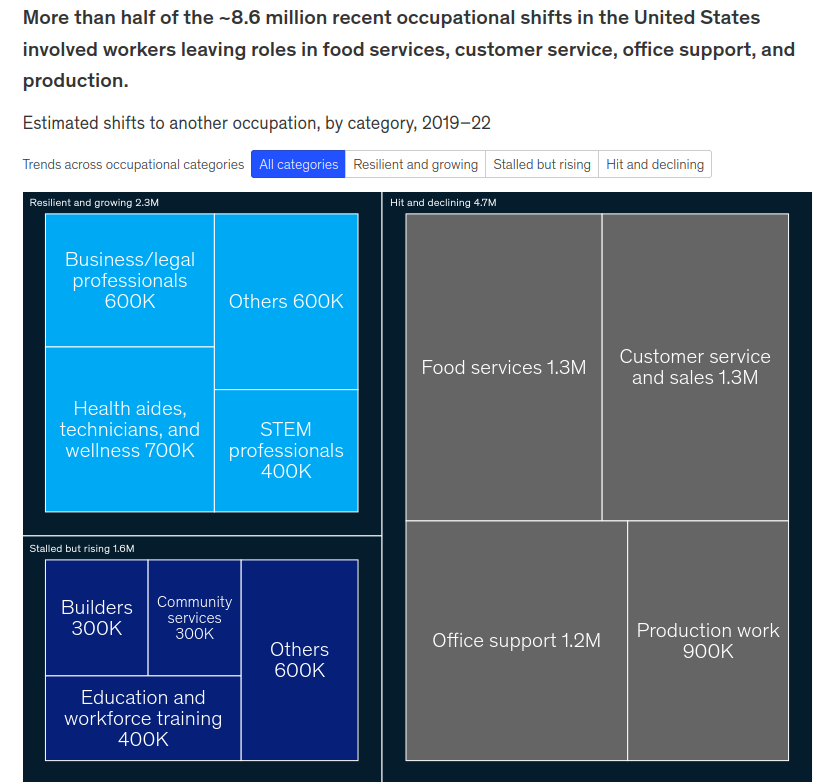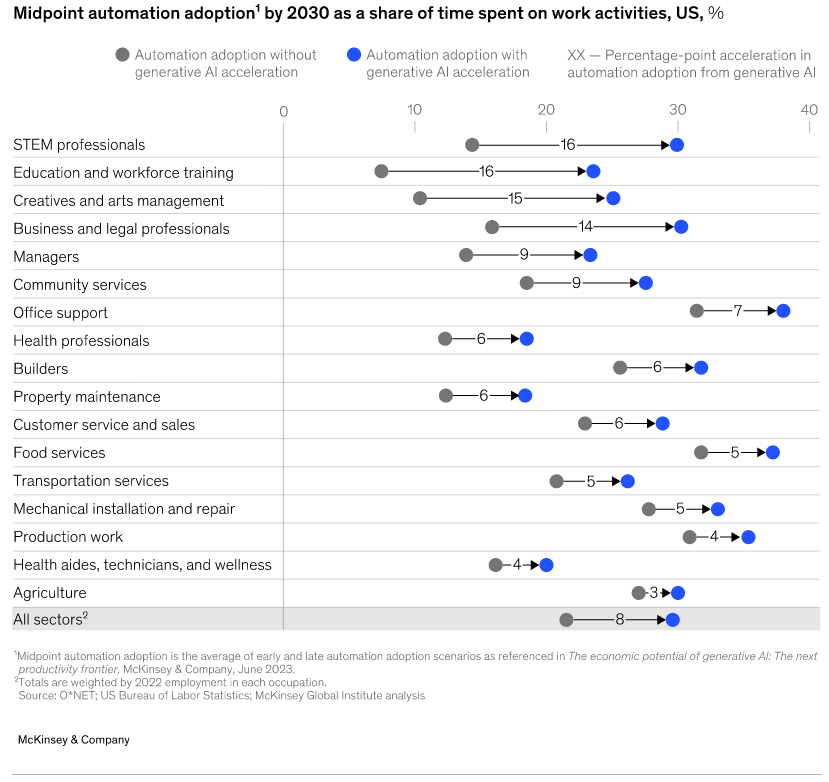According to a recent article on McKinsey’s website titled “Generative AI and the Future of Work in America,” the US labor market is experiencing significant transformations. From 2019 to 2022, there have been 8.6 million occupational shifts, and the rise of generative AI is expected to further accelerate this trend. By 2030, it is projected that up to 30 percent of current work hours could be automated through generative AI. Contrary to popular belief, the implementation of generative AI is not expected to eliminate jobs but rather enhance the work of professionals in STEM, creative, and business fields. However, certain job categories such as office support, customer service, and food service employment may continue to decline as automation takes over repetitive tasks.
The future of work in America will also be influenced by federal investments in climate and infrastructure. This will lead to a shift in employment from industries like oil, gas, and automotive manufacturing to green industries. Additionally, there will be an increased demand for jobs in construction and healthcare. It is estimated that by 2030, around 12 million more occupational transitions will be required, with a potential reweighting towards higher-wage jobs. To navigate these changes successfully, workforce development and inclusive hiring approaches will be crucial. Employers will need to focus on skills and competencies when hiring and provide opportunities for upskilling and reskilling.

The COVID-19 pandemic has also played a significant role in shaping the future of work. It has led to a substantial increase in the quits rate, with many workers reassessing their career paths. Automation, particularly through generative AI, is expected to play a major role in changing the demand for various occupations. The potential applications of generative AI in businesses are vast and varied. From streamlining processes to creating personalized customer experiences, the impact of this technology is expected to be significant. In conclusion, the future of work is already here, with labor shortages and shifts in occupations becoming more evident.
The rise of generative AI and other technological advancements will continue to reshape the labor market. Adapting to these changes will require proactive measures such as workforce development, inclusive hiring practices, and a focus on acquiring the necessary skills for the jobs of the future.
- Gen AI Adoption:
The report reveals that a significant majority, 79% of the surveyed participants, have had some exposure to gen AI. Moreover, 22% reported using it regularly for their work. This widespread adoption showcases the increasing recognition of gen AI’s potential and its ability to enhance organizational processes.

- Regional Differences:
North America emerged as the leader in gen AI adoption, followed by Europe and the Asia-Pacific region. This regional disparity highlights the varying levels of awareness and implementation of gen AI across different parts of the world. However, it is important to note that gen AI is making its mark globally, indicating a growing need for organizations to leverage its benefits. - Industries at the Forefront:
The technology, media, and telecom industries were identified as the primary adopters of gen AI. This finding aligns with the dynamic and data-driven nature of these industries, where gen AI can significantly improve efficiency and decision-making processes. However, it is worth noting that gen AI has the potential to revolutionize operations across various sectors, and its application is not limited to these industries alone. - Applications of Gen AI:
Gen AI is primarily utilized in marketing and sales, product and service development, and customer care. These areas benefit from gen AI’s ability to generate content, analyze data, and enhance customer interactions. By automating certain tasks and augmenting human capabilities, gen AI can enable organizations to streamline processes, make data-driven decisions, and deliver personalized experiences to their customers. - Long-Term Investment:
The report suggests that gen AI is not a passing trend, as 40% of companies plan to increase their AI investments. This statistic indicates the growing recognition of AI, including gen AI, as a strategic asset for organizations. Additionally, 28% of companies are already discussing AI at the board level, highlighting the increasing significance of AI in shaping business strategies and operations.

Generative artificial intelligence (gen AI) is rapidly infiltrating organizations, as highlighted in McKinsey’s recent report. The widespread adoption of gen AI across industries and regions underscores its potential to revolutionize organizational processes. From marketing and sales to product development and customer care, gen AI offers opportunities for enhanced efficiency, decision-making, and customer experiences. As companies recognize the long-term value of gen AI, investments in AI technologies are expected to increase. With gen AI poised to become an integral part of organizations’ strategic agendas, embracing this technology can provide a competitive advantage in an increasingly AI-driven world.nn/